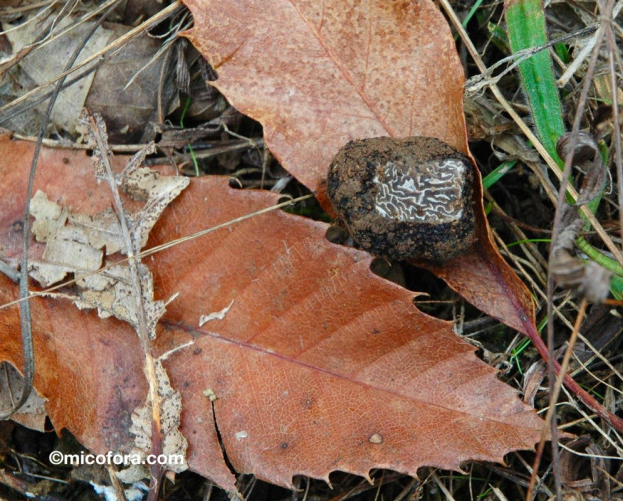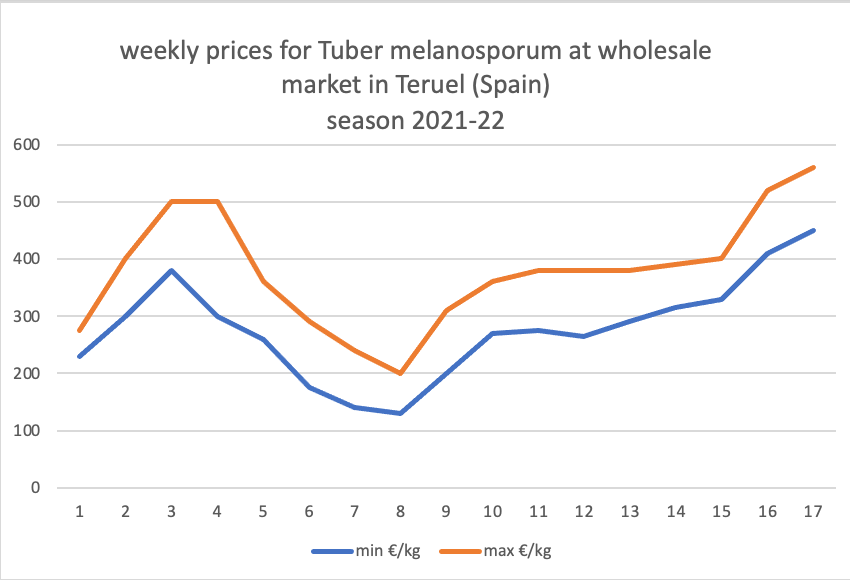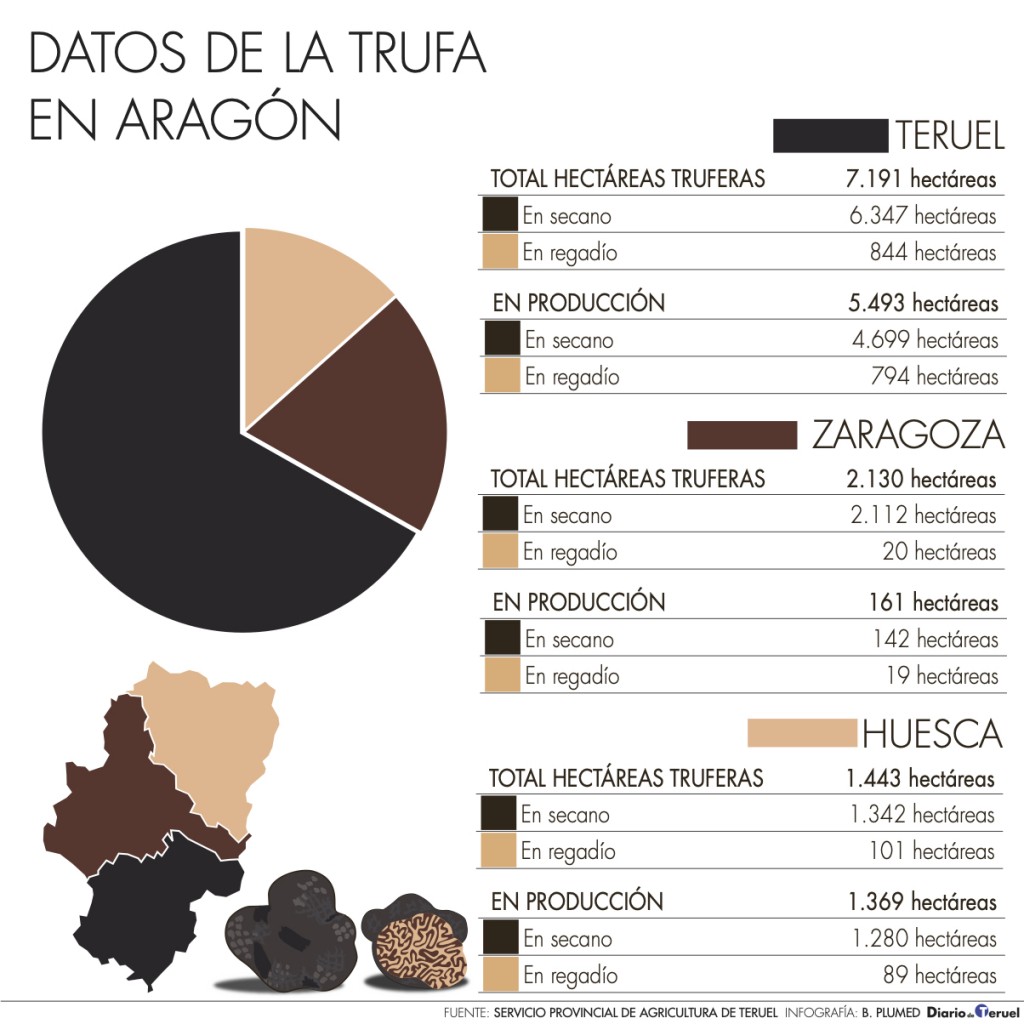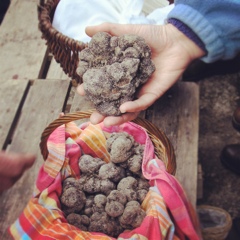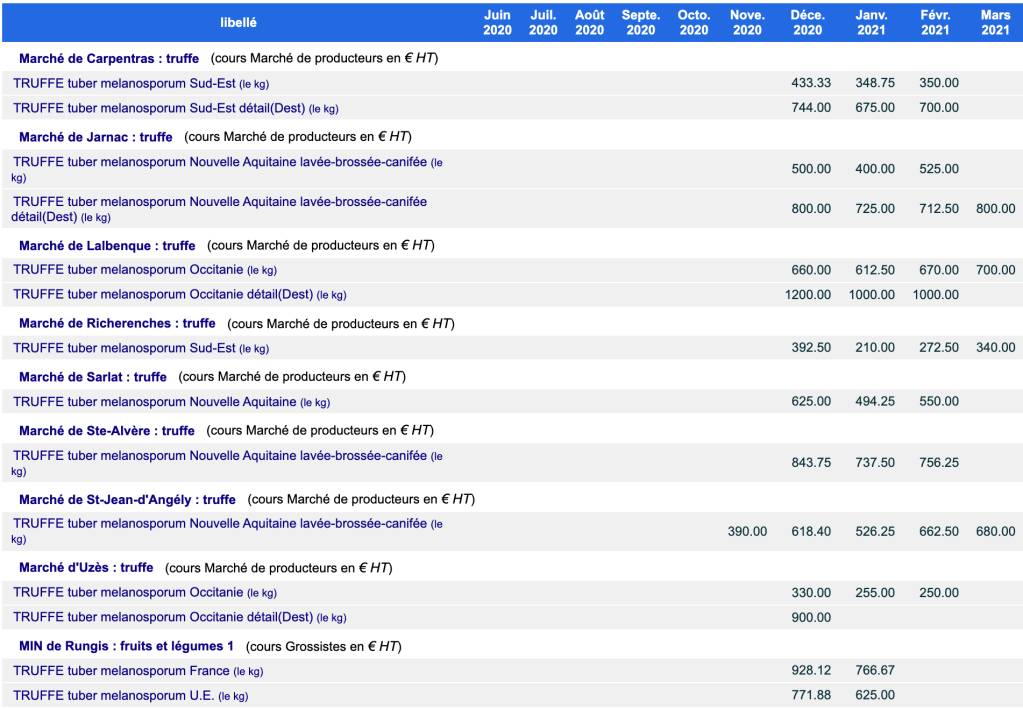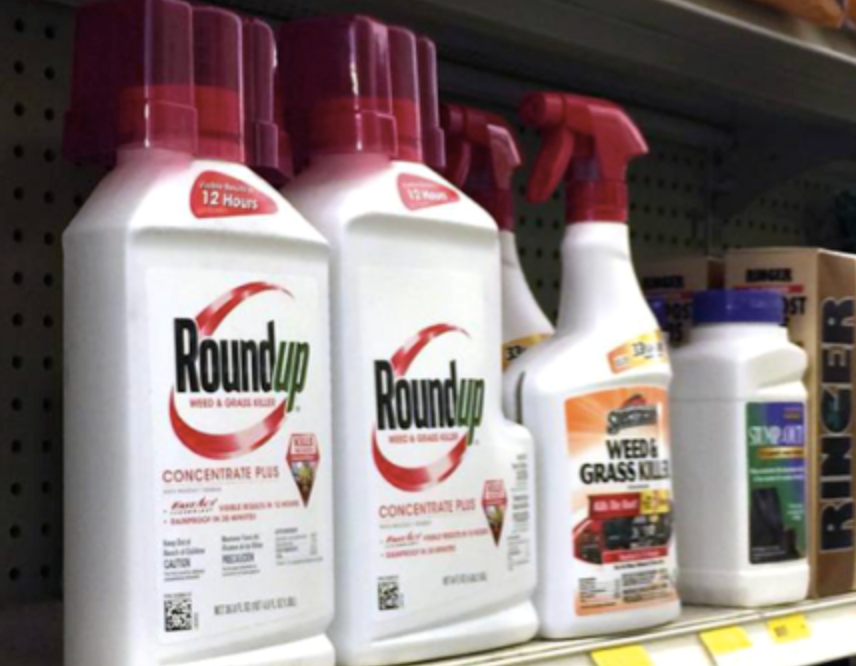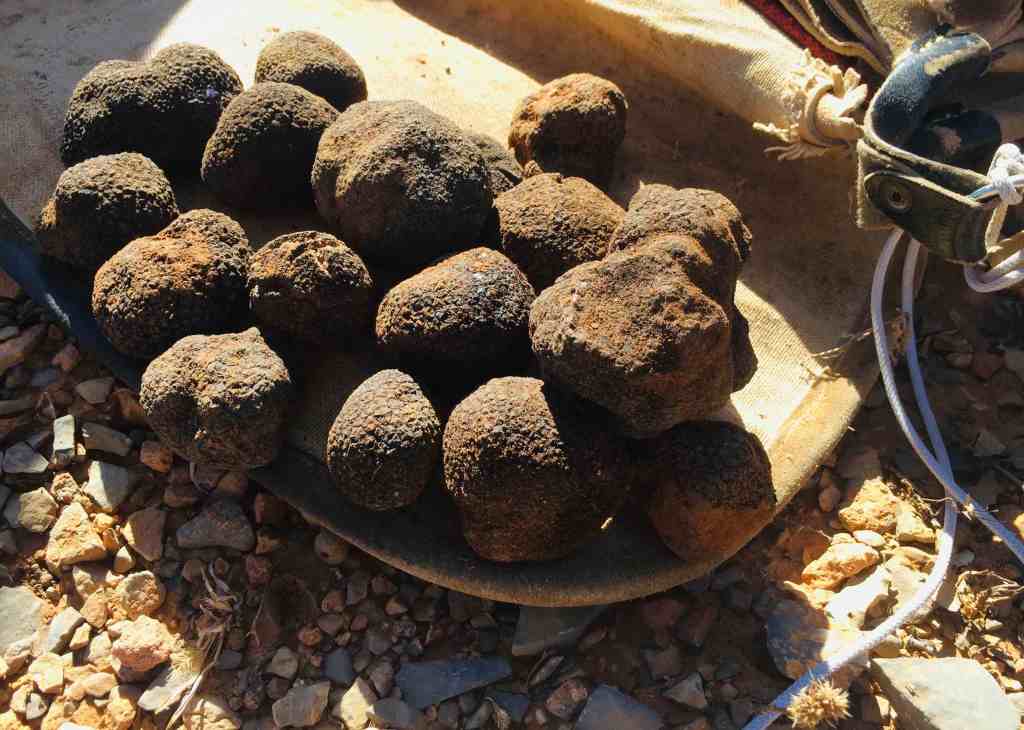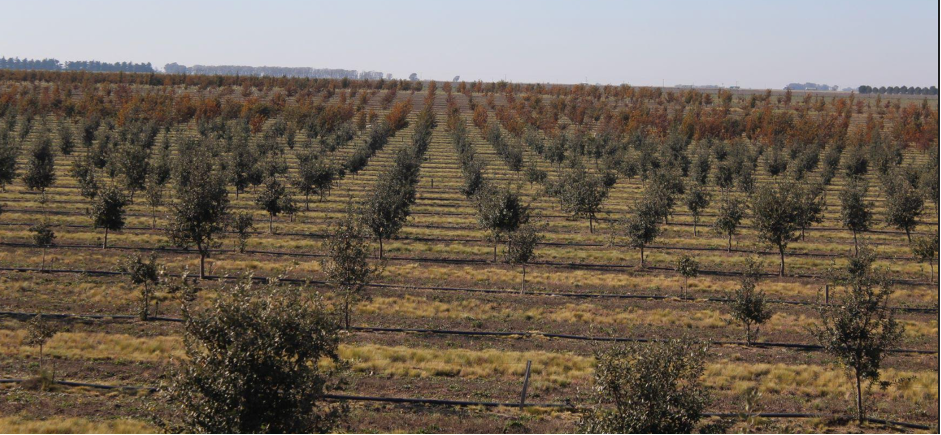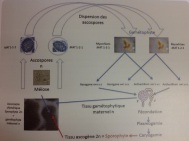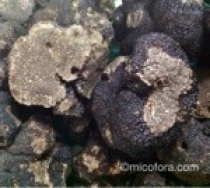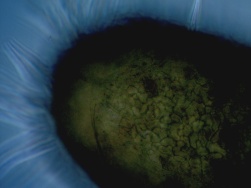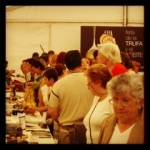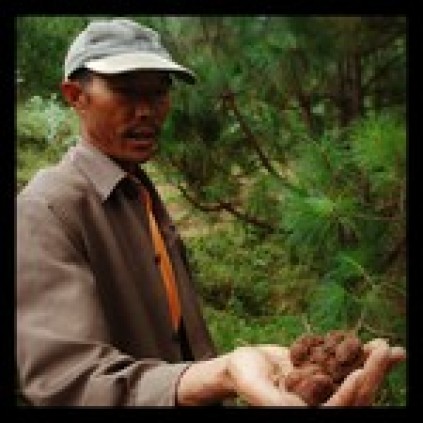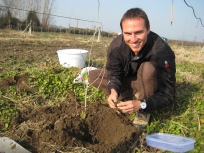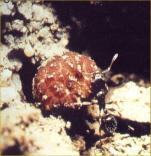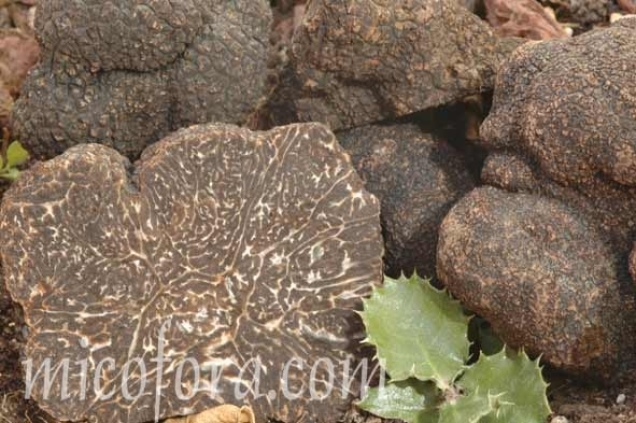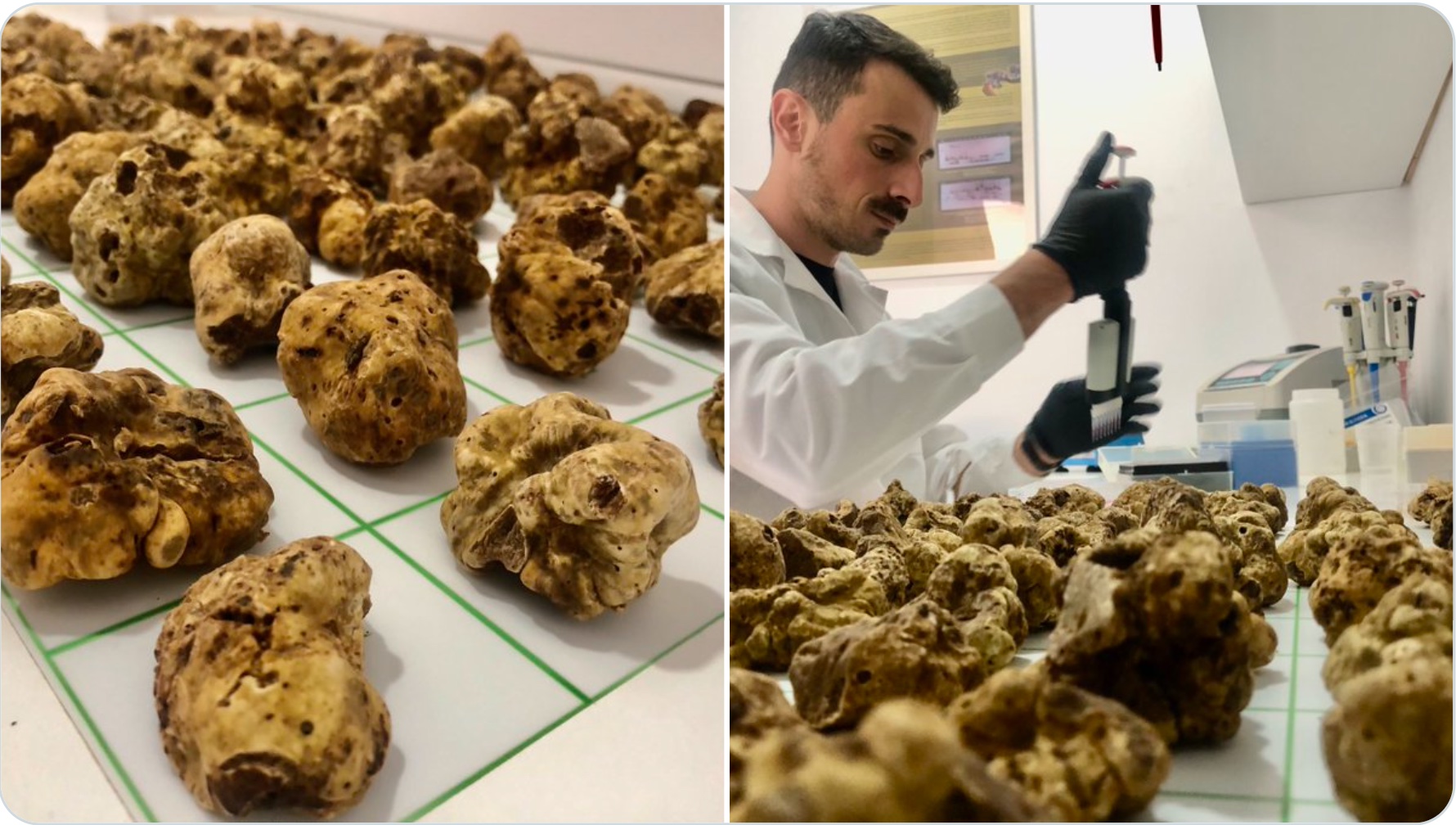
Tuber magnatum Picco is the most expensive of the truffles and lots of research has been carried out in an attempt to understand its ecology and biology. There is a lot of information on its life cycle that remain unclear and that made its cultivation extremely difficult and only recently have we had the scientific proofs that it could be possible.
T. magnatum is considered the best truffle because of its intense aroma and unique flavour. As a consequence, Italian retail prices for T. magnatum are higher than for any other truffle and make it one of the world’s most expensive foods, with prices ranging from 1000 to 6000 EUR kg and a business of about 0.9 billion EUR year.
Tuber magnatum is a “white truffle” and like others as Tuber borchii, Tuber dryophilum and Tuber puberulum it is characterized by smooth, pale-colored ascomata. The gleba contains, fine, clear veins, which are light-hazel-colored at maturity. In the case of T. magnatum, one to three (rarely four) spores are enclosed in each ascus.
T. magnatum cultivation has received a new approach. With the development of specific primers, its mycorrhizas and mycelium can now be unequivocally identified.
In 2019 and 2020 it was proven in France that it was possible to cultivate T. magnatum just like other species of truffles, and moreover, outside its natural growing area, and only 4 & 5 years after planting, similar to T. melanosporum and T. aestivum orchards, but a single plantation of 50 oaks fruited in just 5 trees. Although this is quite exciting, field studies are still necessary to optimize T. magnatum cultivation practices.
PCR tests confirmed the fungus’s mycelia were present in soil samples taken from near the trees at four of the french locations. The first three truffles, found in Nouvelle Aquitaine, were discovered four-and-a-half years after the inoculated trees had been planted. Further PCR tests confirmed they were T. magnatum. The 26 truffles found in 2021 were unearthed beneath 11 different trees, with 5 under one of them. The largest weighed 150g.
Due to the increased demand in this kind of trees and after several years of research Micofora has decided to produce trees mycorrhized with Tuber magnatum for the European market.
It is important to point that although we can provide magnatum certified truffle trees, DNA tested, we are at the beginning of understanding its culture. There are still plenty of gaps of information about its life cycle and if any trying to grow any truffle specie is a risk venture, growing magnatum will be even more.
In the following lines we´ll try to explain why last decades trials failed and what we know about its ecology and how to translate it into farming.
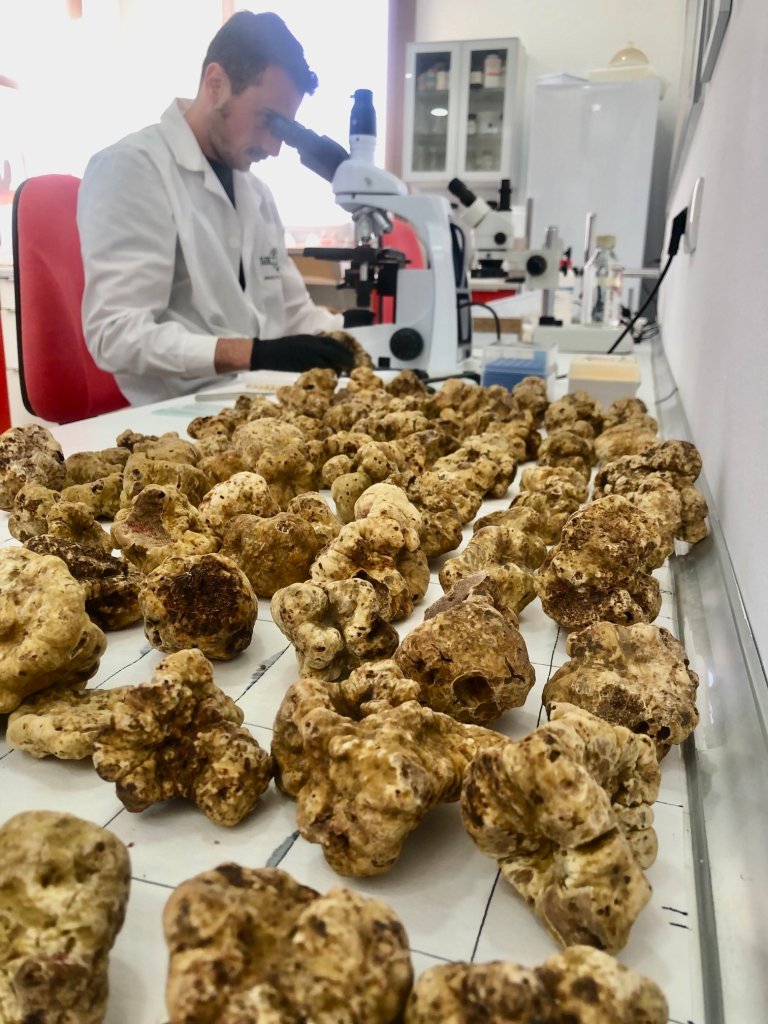
Why so many trials and orchards failed in the past?
First the mycorrhiza description was initially wrong, that lead to have been marketed trees infected with other lower quality truffles, like borchii or oligospermum, that were used as well as inoculum due to confusion. It was not until year 2000 that the DNA techniques could be used to solve that.
In Italy hundreds of thousands of trees were sold, and just about 10 orchards produced magnatum between 15-20 years later. These plantations were in natural producing areas of the white truffle, so they could came naturally infected after those years. Some first produced borchii, considered a first stage fungi, better associated to young trees, before moving to fruit magnatum in the same orchard.
One funny thing about this truffle, is that produces a few mycorrhizae in the field and tree production in nursery is difficult. Often, mycelia or mycorhizae could not be detected even in highly productive sites, while they were simultaneously detected in unproductive areas. Apparently, mycelia or mycorhizae presence is no clear sign of site productivity.
Where it fruits naturally?
T. magnatum can be harvested from mid September until the end of December. It has long been considered an almost exclusive Italian truffle restricted to the north and center of the country with smaller patches in Istria, Croatia, Hungary, south eastern France and the Ticino Canton of Switzerland. However, recent studies have also found it in the Geneva Canton of Switzerland, several Balkan regions, Sicily and Greece. These last two areas, in the 40º north latitude are quite interesting in order to try to attempt to grow them in central regions of Spain or other countries with a mediterranean climate.
Soil
Tuber magnatum grows in well-drained and well-structured marls, without gravels, but seems better adapted than the other truffles to clay soils. The most suitable soil composition is more or less equal proportions of sand and clay. The optimal pH varies from neutral to moderately alkaline, high carbonate and characterized by a high degree of base saturation and sufficient water throughout the year.
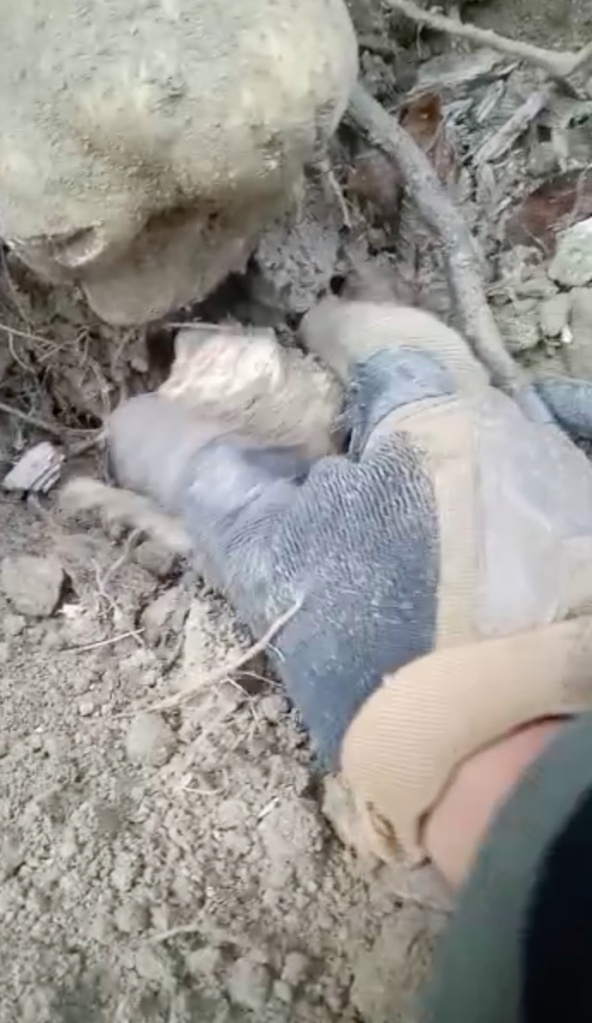
It is also associated with stagnant surface water, very soft soils and more than 15% of the soil volume occupied by interconnected macropores. Ideal places are the banks of rivers or other waterways. Other areas include forest margins and where the soil is disturbed or under isolated trees. The constant presence of water is obligatory and encourages dense canopy cover.
On the other hand, mind that when growing any truffle specie, using tractors and heavy machinery may increase soil compaction, so we better find loam soils with low clay contents.
Host trees
T. magnatum is primarily associated with Alnus cordata (alder), Corylus avellana (hazelnut), Ostrya carpinifolia, Populus alba (white poplar), P. tremula (European trembling aspen), P. nigra (Lombardy poplar), Quercus cerris (Turkish oak), Q. ilex (holm oak), Q. pubescens (downy oak), Q. robur (English or common oak), Salix alba (white willow), S. caprea (pussy willow), Tilia cordata (small-leaved lime), T. platyphyllos (large-leaved lime) and Fagus sylvatica.
Quercus pubescens will be the main host tree produced in the micofora nursery located in Barcelona (Spain).
Ecology and Climate
Tuber magnatum grows naturally in climate ranging from subcontinental to Mediterranean, where the average annual rainfall is usually high (from 600 to 800 mm, even up to 1200 mm). With no dry period in summer or at least ecology should keep moisture during summer. In all plantations we strongly recommend to add irrigation to compensate the lack of summer rain.
The newest results obtained in 2014 in different habitats in Italy revealed that in early spring, the mean quantity of mycelium tends to increase and redistributes within the fruiting patches, while in autumn it concentrates only in the close vicinity of the ascocarps. This mycelium, measured with quantitative PCR shows more mycelium concentration associated to high water content (BTW, quite a similar behaviour to melanosporum).
This truffle enjoys bottoms of valleys or slopes with gentle slopes. The altitude is quite variable depending on latitudes, as it happen with melanosporum: at higher latitudes if may fruit at sea level but in southern areas like Greece or Italy up to 800 meters. It prefers dense vegetation and close canopies (shade), so keeping constant soil humidity in all seasons.
In one of the most southern natural producing areas, 3h drive south of Napoli, truffieres are north facing associated with a fine loamy-sandy soil bearing high carbonate content over a conglomerate bead-rock substrate. Producing truffle sites are mostly located on northern faced lands and at different altitudes (from 350 to 750 m). This is the same that happens in Spain for wild melanosporum, looking for sunlight and south facing slopes in the north of the country, but shady spots and north facing in the most southern latitudes.
Can we grow T. magnatum in Spain or other areas in the Mediterranean?
Again, trying to grow this truffle is a high risky venture. That said, we share the same soils and climates of the areas where this truffle fruits naturally in the south of Italy or central Greece. With both radiation of 7,8kWh in midsummer and the average temperatures in the hottest month is 23ºC and the average in the coldest month between 2ºC-6ºC as seen in the figures below, adding Teruel as a main truffle region in Spain to be able to compare with:
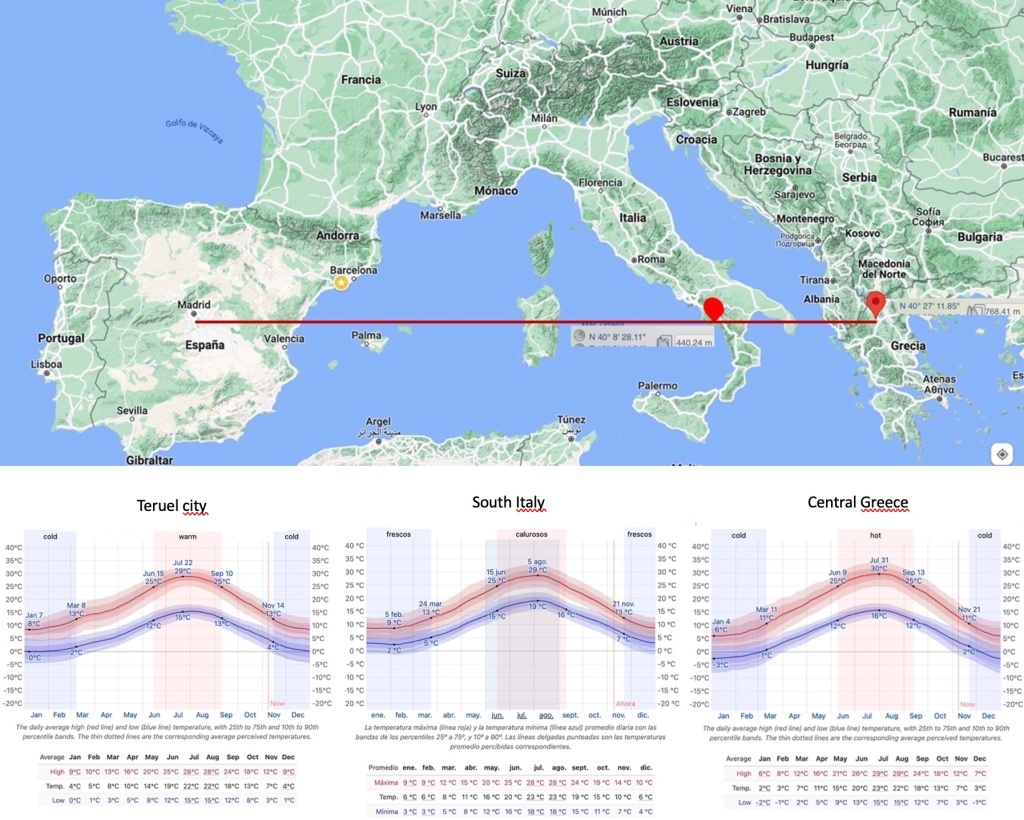
Some references:
Fungal findings excite truffle researchers and gastronomes.2022. https://www.nature.com/articles/d41586-022-02118-8
The Mysteries of the White Truffle: Its Biology, Ecology and Cultivation.2022. https://www.mdpi.com/2673-8392/2/4/135
A realized Tuber magnatum niche in the upper Sinni area (south Italy).2013. https://www.scirp.org/journal/paperinformation?paperid=33617


